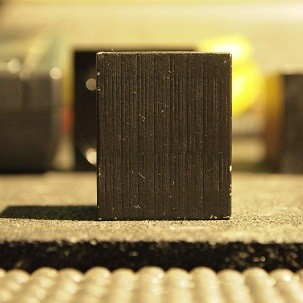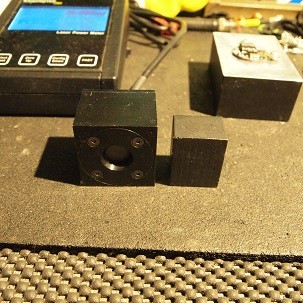- Joined
- May 4, 2009
- Messages
- 5,426
- Points
- 113
Bricks are fine but a little big, I have a simple cube of aluminum painted black
with plain old flat black spray paint and it works just fine for me, I keep it next
to the OPHIR head of my LPM and when I'm getting ready to measure a laser
diode with a lens in front of it I always point the laser at the block first to be
sure it is not set to a pin point and if it is I un-focus it or spread the beam
out to at least 1/4" wide before pointing it at the OPHIR sensor.
Just a simple cube of Al painted black

Ready to meter a laser

with plain old flat black spray paint and it works just fine for me, I keep it next
to the OPHIR head of my LPM and when I'm getting ready to measure a laser
diode with a lens in front of it I always point the laser at the block first to be
sure it is not set to a pin point and if it is I un-focus it or spread the beam
out to at least 1/4" wide before pointing it at the OPHIR sensor.
Just a simple cube of Al painted black

Ready to meter a laser




